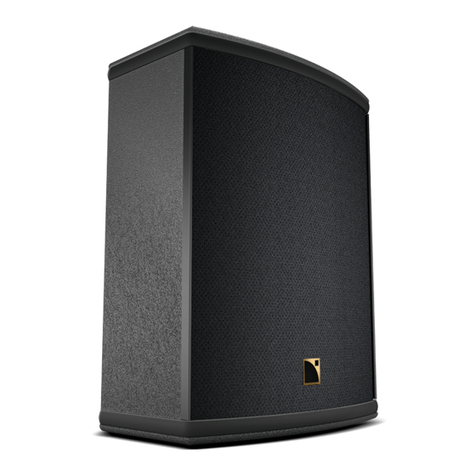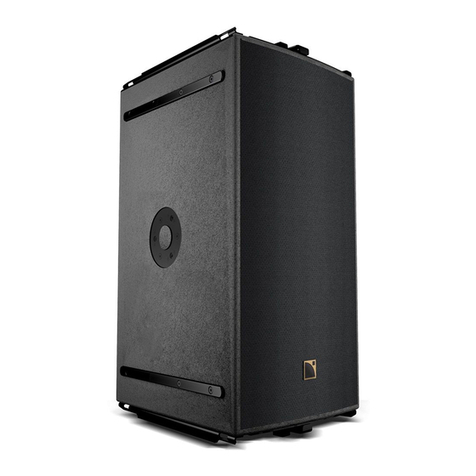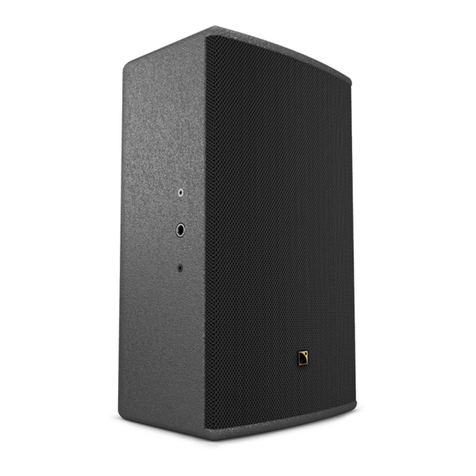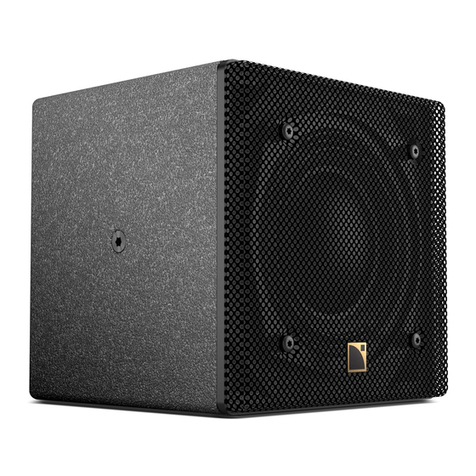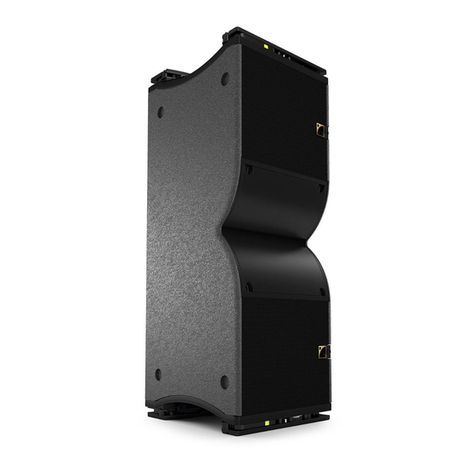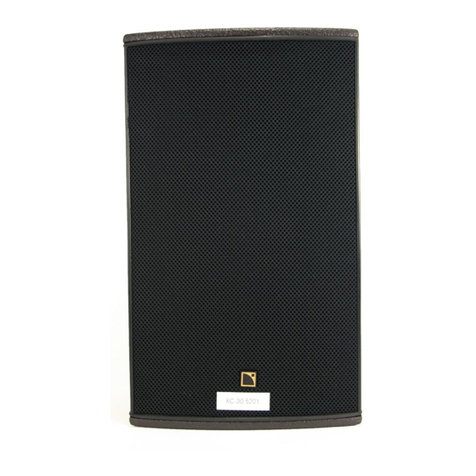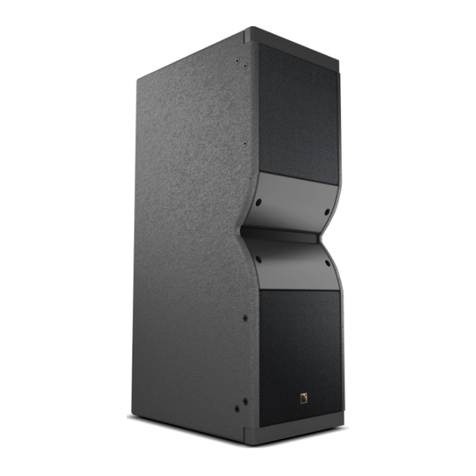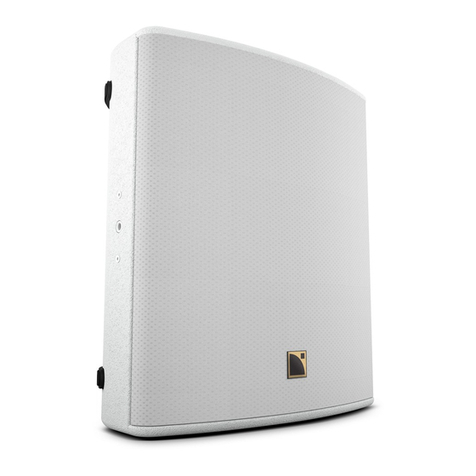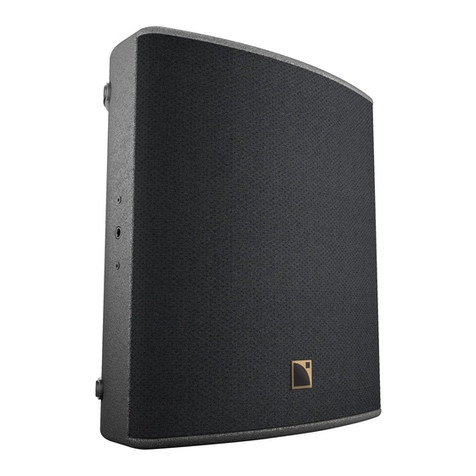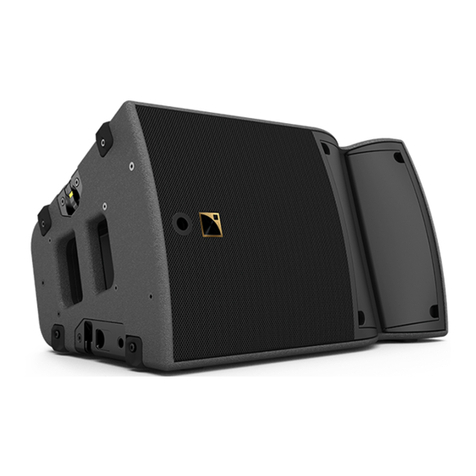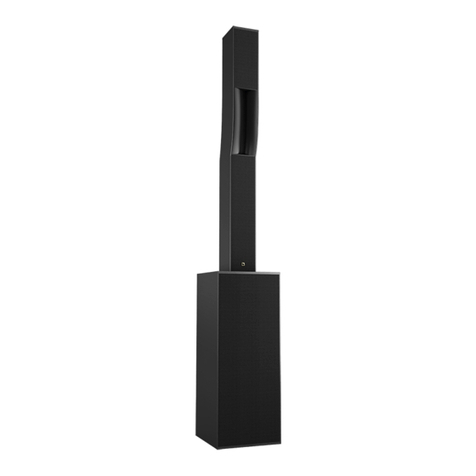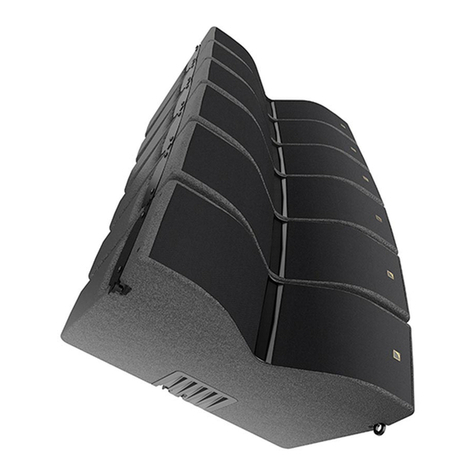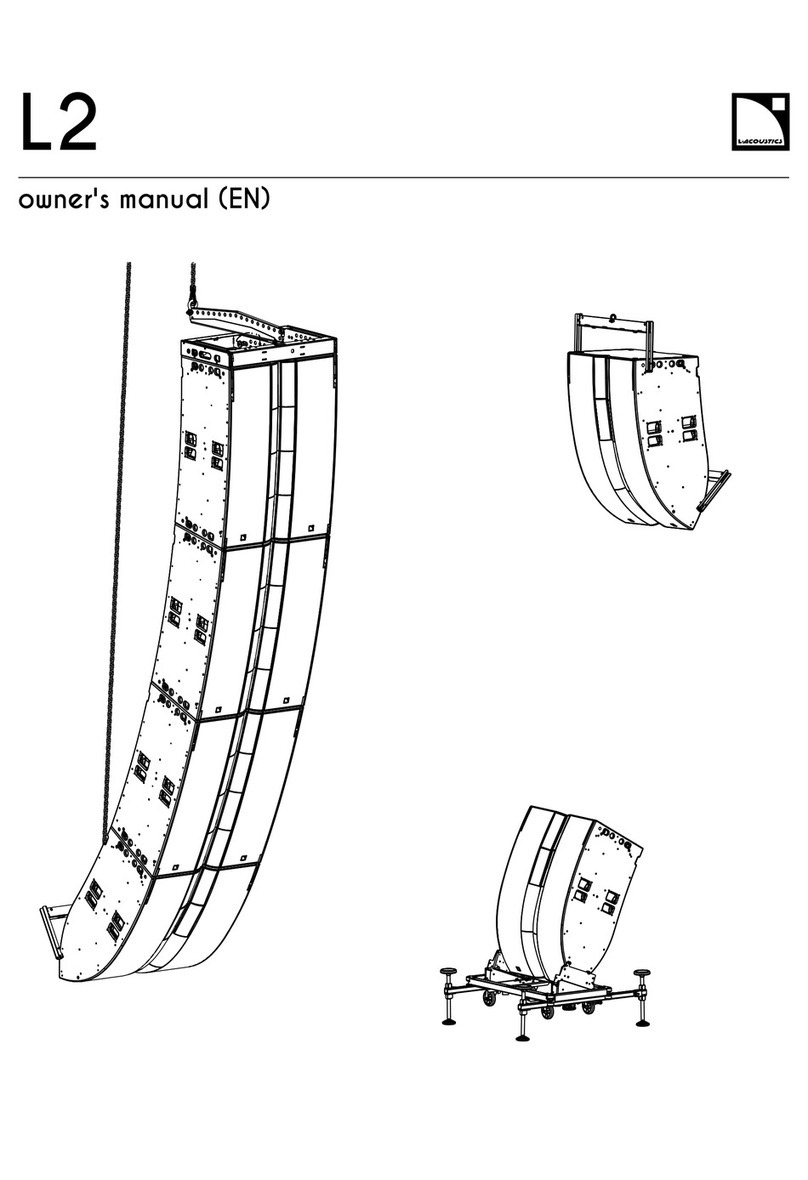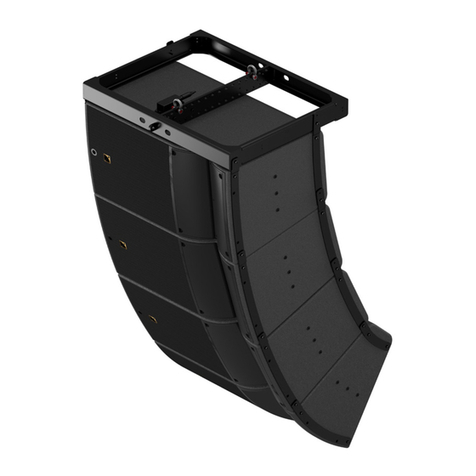
ARCS
ARCSARCS
ARCS
®
WIDE SYSTEM
WIDE SYSTEM WIDE SYSTEM
WIDE SYSTEM / ARCS
ARCSARCS
ARCS
®
FOCUS
FOCUS FOCUS
FOCUS SYSTEM
SYSTEMSYSTEM
SYSTEM
rigging manual
rigging manualrigging manual
rigging manual
VERSION 1.0
ARCSWIFO_RM_EN_1-0
w w w . l - a c o u s i c s . c o m
6
66
6
2
22
2MECHANICAL
MECHANICALMECHANICAL
MECHANICAL
SAFETY
SAFETYSAFETY
SAFETY
2.1 Maximum configurations
The RCS
®
WIDE/FOCUS rigging system has been designed to comply with BGV-C1 (2012) and EN ISO 12100-1
(2004) when implementing the following arrays:
Ground-
stacking
n RCS
®
WIDE/FOCUS
2 RCS
®
WIDE/FOCUS on top of 2 SB18m
Flying
Ratio of
4 RCS
®
WIDE/FOCUS
for 1 WIFOLIFT bar
With WIFOBUMP With WIFOBUMP and CL MP250
8 RCS
®
WIDE/FOCUS
or
4 RCS
®
WIDE/FOCUS and 2 SB18m
or
8 SB18m
6 RCS
®
WIDE/FOCUS
or
2 RCS
®
WIDE/FOCUS and 1 SB18m
or
4 SB18m
Mechanical safety of the shackles
The bow shackles Ø12mm provided by L- COUSTICS
®
have a working load limit (WLL) of 1000 kg with a 6:1
safety factor. This rating is in accordance with BGV-C1 (2012) recommendations when implementing the
maximum configurations authorized by L- COUSTICS
®
.
Mechanical safety of the rigging system
Maximum configurations indicate the maximum number of enclosures which can be safely arrayed without the
need for SOUNDVISION modeling. For more enclosures, model the system in SOUNDVISION and check
the Mechanical Data section for any stress warning or stability warning.
2.2 Assessing mechanical safety
In order to assess the actual safety of any array configuration before implementation, refer to the following warnings:
Rated working load limit (WLL) is not enough
The rated WLL is an indication of the element resistance to tensile stress. For complex mechanical systems
such as loudspeaker arrays, WLLs cannot be used per se to determine the maximum number of enclosures
within an array or to assess the safety of a specific array configuration.
Mechanical modeling with SOUNDVISION
The working load applied to each linking point, along with the corresponding safety factor, will depend on
numerous variables linked to the composition of the array (type and number of enclosures, splay angles) and
the implementation of the flying or stacking structure (number and location of flying points, site angle). This
cannot be determined without the complex mechanical modeling and calculation offered by SOUNDVISION.
The overall safety factor of a specific mechanical configuration always corresponds to the lowest safety factor
among all the linking points. lways model the system configuration with the SOUNDVISION software and
check the Mechanical Data section to identify the weakest link and its corresponding working load. By
default, a stress warning will appear when the mechanical safety goes below the recommended safety level.
For ground-stacked arrays, a distinct stability warning is implemented in SOUNDVISION. It indicates a
tipping hazard when the array is not secured to the ground, stage or platform. It is user responsibility to
secure the array and to ignore this warning.
Consideration must be given to unusual con
SOUNDVISION calculations are based upon usual environmental conditions. higher safety factor is
recommended with factors such as extreme high or low temperatures, strong wind, prolonged exposition to
salt water, etc. lways consult a rigging specialist to adopt safety practices adapted to such a situation.



